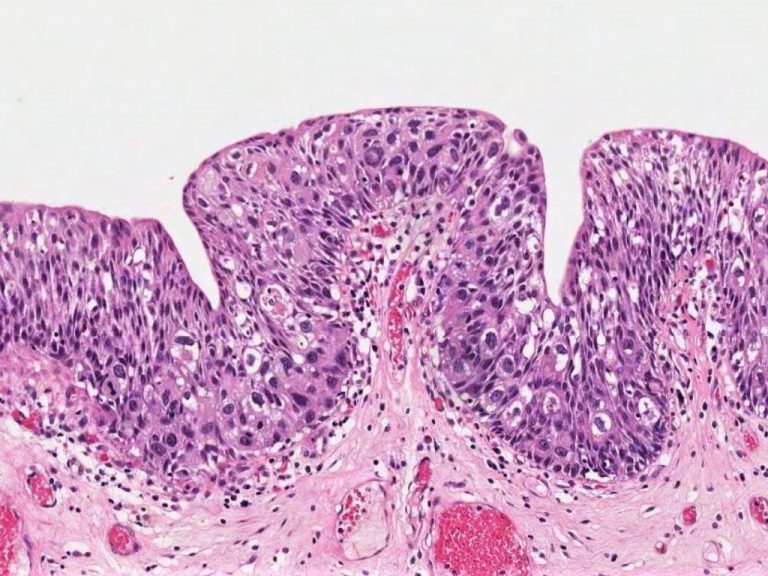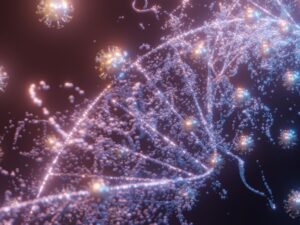Comprometidos con la información que impulsa la innovación
ACTUALIDAD
Enfortumab vedotina y amplificación de NECTIN4: Un enfoque de precisión en cáncer urotelial metastásico

La medicina de precisión continúa transformando el tratamiento del cáncer, permitiendo seleccionar terapias dirigidas basadas en biomarcadores específicos. Un ejemplo destacado en este campo es enfortumab vedotina (EV), un fármaco conjugado que ha demostrado alta eficacia en pacientes con carcinoma urotelial metastásico (CUm), especialmente en aquellos con amplificación del gen NECTIN4.
¿Qué es enfortumab vedotina?
Enfortumab vedotina es un anticuerpo monoclonal conjugado diseñado para atacar selectivamente a las células tumorales que expresan nectina-4, una proteína transmembrana ampliamente presente en tumores uroteliales. El fármaco combina:
- Enfortumab, anticuerpo monoclonal dirigido contra nectina-4.
- Monometil auristatina E (MMAE), un potente agente antimitótico, unido mediante un conector escindible.
Este diseño permite que el fármaco libere su carga citotóxica directamente en las células tumorales que expresan nectina-4, minimizando el daño a tejidos sanos.
Indicaciones clínicas actuales
Enfortumab vedotina ha sido aprobado para:
- Monoterapia intravenosa en adultos con carcinoma urotelial localmente avanzado o metastásico previamente tratados.
Terapia combinada con pembrolizumab (EV/P) en pacientes no tratados previamente y no aptos para cisplatino¹².
NECTIN4: un biomarcador emergente
La expresión de nectina-4 se asocia con amplificaciones en la región 1q23.3, donde se ubica el gen NECTIN4. Esta alteración ocurre en aproximadamente 15% a 20% de los pacientes con carcinoma urotelial avanzado³.
Un estudio multicéntrico reciente realizado por Klümper et al. reveló datos sorprendentes:
- 96% de respuesta objetiva al EV en pacientes con amplificación de NECTIN4, frente al 32% en pacientes sin esta alteración.
- Supervivencia libre de progresión (SLP) superior a 16 meses en el grupo con amplificación, y una tasa de supervivencia global al año del 90% frente al 41% en la cohorte sin amplificación.
- Reducción del 92% en el riesgo de muerte para pacientes con NECTIN4 amplificado (HR: 0,08).⁴
Implicaciones clínicas
Estos hallazgos consolidan a NECTIN4 como biomarcador predictivo de respuesta terapéutica al EV. Además, se ha demostrado que la amplificación de NECTIN4 es una alteración genómica estable, presente tanto en tumores primarios como en etapas metastásicas, lo que permite utilizar muestras del tumor inicial para la toma de decisiones terapéuticas futuras⁵
Conclusión
La combinación de terapia dirigida con enfortumab vedotina y el uso de biomarcadores como NECTIN4 marca un avance importante en la personalización del tratamiento del cáncer urotelial. En CIDEGEN, apostamos por la integración de estudios moleculares y genómicos avanzados que ayuden a identificar perfiles tumorales y seleccionar las mejores estrategias terapéuticas para cada paciente.
Contáctanos para conocer nuestros estudios genéticos oncológicos enfocados en biomarcadores y terapias dirigidas.
Agenda tu cita de diagnóstico genético.
Referencias bibliográficas
- Powles T, et al. Enfortumab vedotin in previously treated advanced urothelial carcinoma. N Engl J Med. 2021;384:1125–1135. ↩
- Yu EY, et al. Enfortumab vedotin after PD-1 or PD-L1 inhibitors in cisplatin-ineligible patients with advanced urothelial carcinoma (EV-201): A multicentre, single-arm, phase 2 trial. Lancet Oncol. 2021;22:872–882. ↩
- Riester M, et al. Integrative analysis of 1q23.3 copy-number gain in metastatic urothelial carcinoma. Clin Cancer Res. 2014;20:1873–1883. ↩
- Klümper N, et al. NECTIN4 Amplification Is Frequent in Solid Tumors and Predicts Enfortumab Vedotin Response in Metastatic Urothelial Cancer. J Clin Oncol. 2024;42(20):2446–2455. ↩
Faltas BM, et al. Clonal evolution of chemotherapy-resistant urothelial carcinoma. Nat Genet. 2016;48:1490–1499. ↩
Compartir

Comprometidos con la información que impulsa la innovación ACTUALIDAD Análisis

Comprometidos con la información que impulsa la innovación ACTUALIDAD Rubinstein-Taybi:

Comprometidos con la información que impulsa la innovación ACTUALIDAD Pruebas
